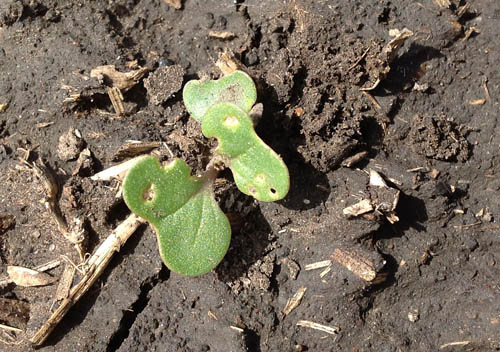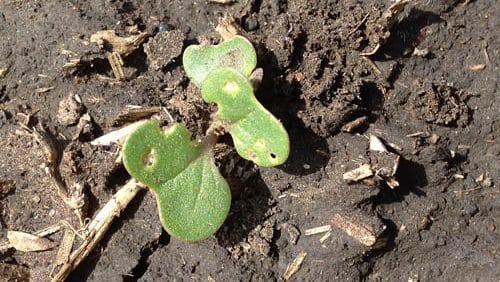
Flea beetles have been spotted on volunteer canola. This does not necessarily mean that populations are high and that canola is at greater risk, but it’s a chance to scout and see what type of flea beetle is present. Flea beetle populations are shifting, and central regions in particular are seeing the most dramatic shift from crucifer type to striped.
If flea beetles are already out and on volunteers given the conditions we’ve had, as soon as it gets warm, they will be feeding more aggressively.
Listen to ACPC’s Growing with Canola podcast with Troy Prosofsky on the topic of flea beetles.
Diamondback moth. Some Alberta locations are showing increases this week. Alberta Agriculture explains what this means: In short an early population of the size indicated by early monitoring means that it is very likely that diamondback moth will go through 3 to 4 generations in the Prairies this year and that large, damaging populations are possible by the end of the growing season. As well we know a lot can happen between now and then. The impact of diseases and natural enemies cannot be underestimated as they often hold the development of damaging populations back enough that treatment is not needed. Click here for the full article. Click here for the most updated Alberta numbers.
Cutworms. Cutworm losses can occur early in the season. Check emerged canola crops for missing plants. Could be cutworms. Could be seedling diseases. Cutworm researchers are calling on growers and agronomists to help them collect samples, and learn more about cutworm management in canola and other crops. Click here for more information on collecting.

